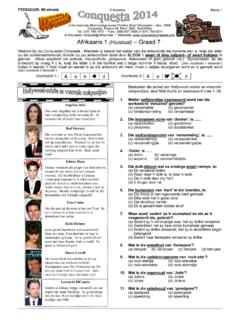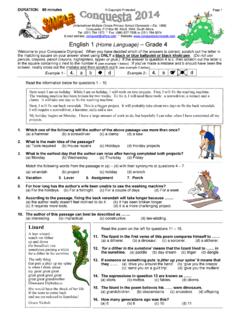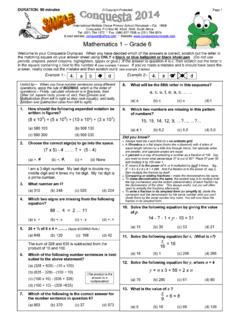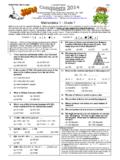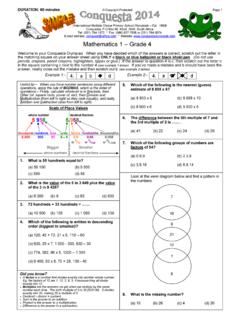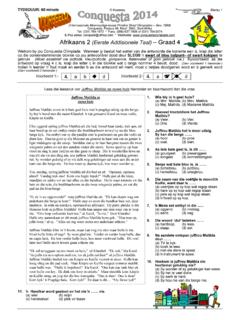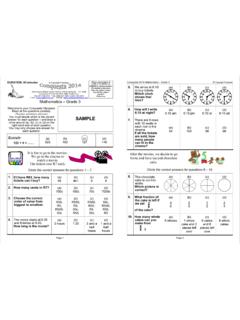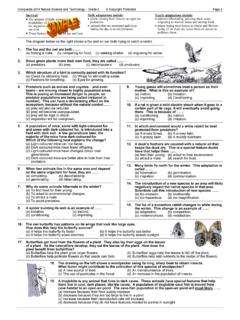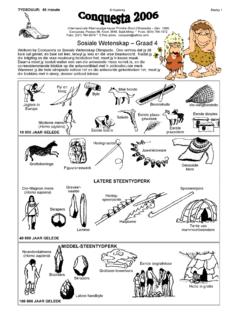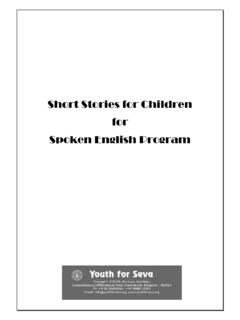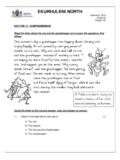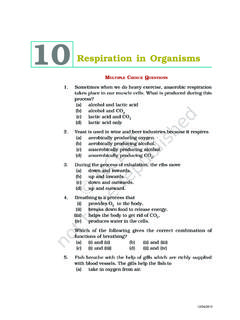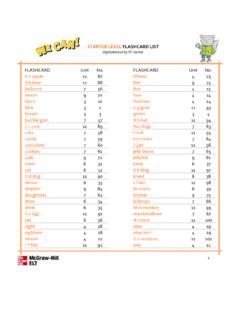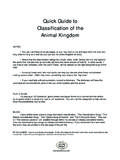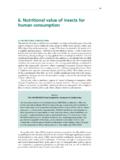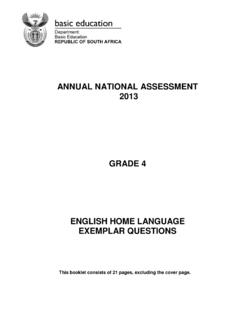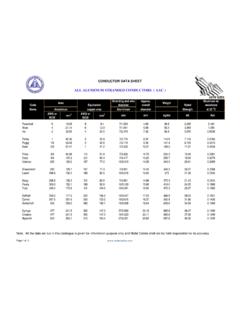Transcription of 2014 Natural Science and Technology gr 5 - Past Papers
1 DURATION: 90 minutes Copyright Protected Page 1 Natural Science and Technology Grade 5 Welcome to your Conquesta Olympiad. When you have decided which of the answers is correct, scratch out the letter in the matching square on your answer sheet using ONLY a black or blue ballpoint or black khoki pen. (Do not use pencils, crayons, pencil crayons, highlighters, tippex or glue.) If the answer to question 4 is c, then scratch out the letter c in the square containing c next to the number 4 (see example 1 below). If you ve made a mistake and b should have been the answer, neatly cross out the mistake and then scratch out b (see example 2 below).
2 Example 1:- Example 2:- 1. Which of these groups contains only animals without a backbone (invertebrates)? (a) dog, bear, jellyfish (b) earthworm, crayfish, jellyfish (c) bear, dog, crayfish (d) jellyfish, earthworm, bear 2. Look at the table on the right. Why were these animals placed into these groups? (a) One group is active during the day; the other group is active at night. (b) One group lives near prairies; the other group lives near forests. (c) One group benefits people; the other group is a pest to people. (d) One group eats only plants; the other group eats only meat. 3. The pictures on the right show four different living things.
3 What do all of these living things need to survive? (a) heat and space (b) light and water (c) soil and water (d) water and space Most organisms are made of many different types of cells. Each type of cell has a special role within the organism. 4. Which of these organisms most likely contains rectangular shaped cells? (a) cat (b) oyster (c) fish (d) tree 5. Which of these cells uses sunlight to produce food? (a) Leaf cell (b) Skin cell (c) Nerve cell (d) Muscle cell 6. The pictures below show how a porcupine and a cactus .. (a) move. (b) get their food. (c) protect themselves. (d) take in water. 7. Which two parts of living things have the same function?
4 (a) seed and ear (b) root and wing (c) tree bark and skin (d) leaf and tail fin 8. A hawk is flying high in the sky. Which part of the hawk best helps it find food? (a) Its curved beak. (b) Its keen eyesight. (c) Its long wings. (d) Its sharp claws. 9. Which of the following must all plant and animal species do in order for each species to survive? (a) migrate (b) reproduce (c) make food (d) change colour 10. For which of the following do many plants depend on animals? (a) food (b) shelter (c) photosynthesis (d) seed dispersal 11. Which of the following best explains the way humans are influenced by micro-organisms?
5 (a) All micro-organisms are helpful to humans. (b) All micro-organisms are harmful to humans. (c) Many micro-organisms are helpful to humans, and a few are harmful. (d) Many micro-organisms are harmful to humans, and a few are helpful. (International Multiple Choice Primary School Olympiads Est. 1998) Conquesta, P O Box 99, Kloof, 3640, South Africa Tel: (031) 764-1972 * Fax: (086) 637-7808 or (031) 764-0074 E-mail address: * Website: Leaf Cell Nerve Cell Skin Cell Muscle Cell Flower Mushroom Ant Fox Group A Group B Grasshopper Owl Deer Cockroach Robin Moth Monkey Bat

